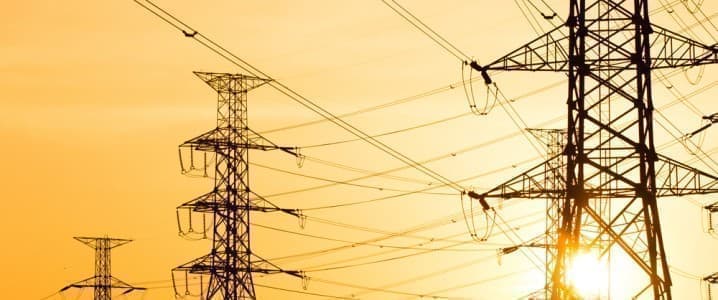Business
Texas Faces Data Center Shutdowns to Protect Energy Grid

Texas is considering shutting down data centers during grid emergencies to safeguard its energy infrastructure. This decision follows a series of events highlighting the increasing strain on the state’s power grid, including severe flooding over the Fourth of July that caused significant outages. The Electric Reliability Council of Texas (ERCOT) has issued multiple conservation alerts and experienced price spikes not due to a lack of electricity, but because of challenges in distributing power effectively.
Growing Vulnerabilities in Texas Energy System
The current situation underscores a broader issue in the U.S. energy landscape. Just days after Texas announced its potential shutoff plans, the U.S. Department of Energy warned that blackout risks could rise significantly across the country by 2030. The challenges Texas faces are not unique; they reflect a national vulnerability stemming from outdated operational methods and infrastructure not designed for today’s demands.
As Texas grapples with an increasingly volatile climate and rapid industrial expansion, the energy grid is being pushed to its limits. The integration of new technologies, including data centers driven by artificial intelligence, is expected to nearly double energy demand in Texas by 2030. This surge adds to the pressure on a transmission system that is still managed under traditional assumptions about weather and energy consumption.
Despite progress in renewable energy sources such as solar, wind, and storage, the physical infrastructure remains largely unchanged. The operating methods have not evolved to meet the demands of modern weather patterns and increasing load growth, exacerbating the situation in a state frequently affected by extreme weather.
Innovative Solutions for Modern Challenges
Utilities worldwide are adopting new strategies that do not rely solely on building additional infrastructure. In Europe, innovative tools like dynamic line ratings (DLR) and hyperlocal weather forecasting have been implemented to enhance the efficiency of existing power lines. These systems utilize data from satellites and various weather stations to optimize power distribution without significant hardware changes.
“A mild breeze — just four miles per hour — can cool power lines enough to boost capacity by 30%,” said energy expert Georg Rute, who has experience implementing these solutions in countries like Estonia and Finland.
By applying AI-driven DLR across thousands of miles of transmission lines, these countries have successfully increased capacity by up to 40%. In contrast, Texas continues to operate under outdated assumptions about grid management, which can leave substantial amounts of energy stranded during peak demand periods.
As Texas prepares for increasingly hot summers and unpredictable weather, smarter operational practices are essential. Demand-side management is important, but reliance on shutting down critical infrastructure like data centers should be a last resort rather than a standard response to energy crises.
Enhancing visibility into grid conditions and improving forecasting methods could allow operators to manage congestion proactively, thus avoiding emergency shutoffs. While building additional power lines and generators remains necessary, these infrastructure projects will take years to implement. In the meantime, Texas can leverage technology to refine grid operations and reduce energy costs for consumers.
ERCOT has historically been a testing ground for innovations in the U.S. energy sector. The decisions made in Texas now will influence how other regions prepare for the challenges posed by a changing climate and rising energy demands. As states across the country observe Texas’s next steps, the urgency for a more resilient and adaptive energy grid becomes evident.
-

 Politics4 weeks ago
Politics4 weeks agoSecwepemc First Nation Seeks Aboriginal Title Over Kamloops Area
-

 World5 months ago
World5 months agoScientists Unearth Ancient Antarctic Ice to Unlock Climate Secrets
-

 Entertainment5 months ago
Entertainment5 months agoTrump and McCormick to Announce $70 Billion Energy Investments
-

 Science5 months ago
Science5 months agoFour Astronauts Return to Earth After International Space Station Mission
-

 Lifestyle5 months ago
Lifestyle5 months agoTransLink Launches Food Truck Program to Boost Revenue in Vancouver
-

 Technology3 months ago
Technology3 months agoApple Notes Enhances Functionality with Markdown Support in macOS 26
-

 Lifestyle3 months ago
Lifestyle3 months agoManitoba’s Burger Champion Shines Again Amid Dining Innovations
-

 Top Stories2 months ago
Top Stories2 months agoUrgent Update: Fatal Crash on Highway 99 Claims Life of Pitt Meadows Man
-

 Politics4 months ago
Politics4 months agoUkrainian Tennis Star Elina Svitolina Faces Death Threats Online
-

 Sports5 months ago
Sports5 months agoSearch Underway for Missing Hunter Amid Hokkaido Bear Emergency
-

 Politics5 months ago
Politics5 months agoCarney Engages First Nations Leaders at Development Law Summit
-

 Technology5 months ago
Technology5 months agoFrosthaven Launches Early Access on July 31, 2025





















